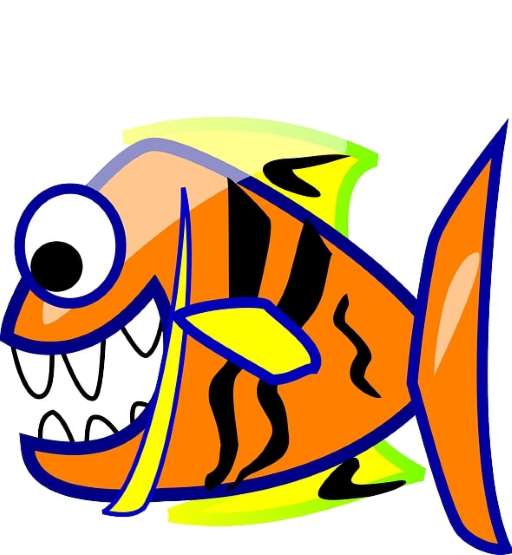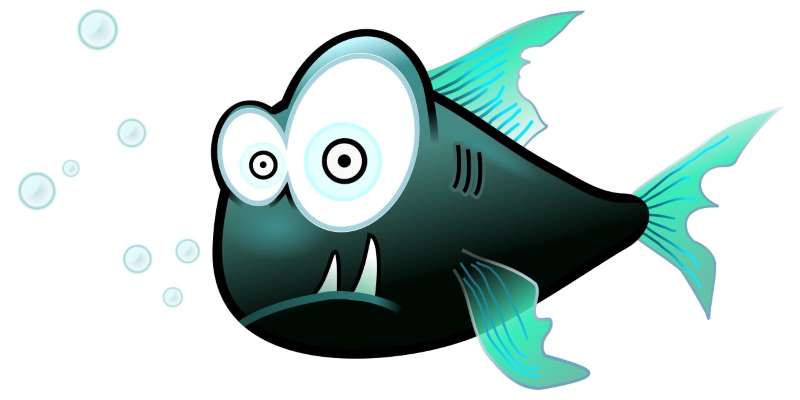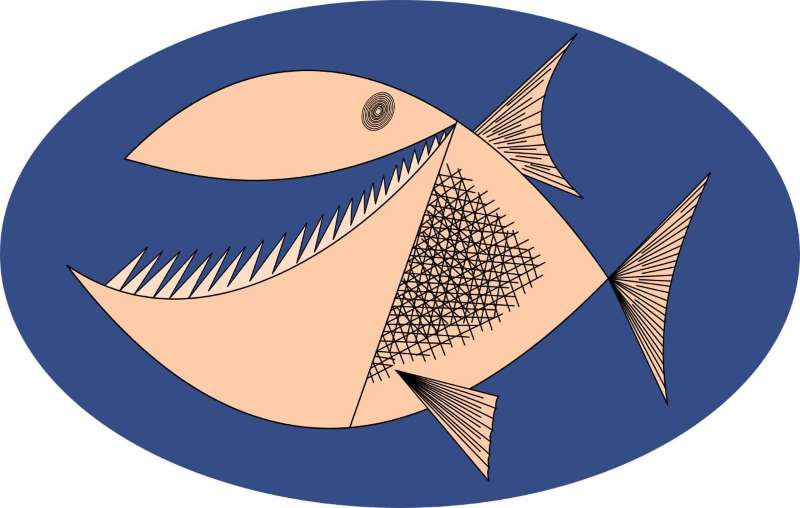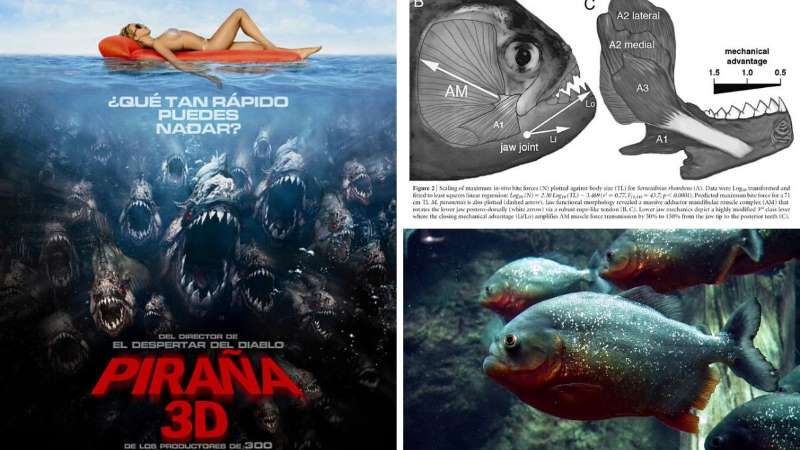
In the Amazon River there are more than twenty different species of fish belonging to the family characidae, to which the piranha is affiliated, and they all have the same name: piranha.
It is thought of as a killer fish that devours a person or large animals in minutes, yet it is actually incapable of doing so unless the prey is dead.
Some recent research shows that piranhas are extremely aggressive only when they disturb their young.
Did you know that one of the piranha’s biggest predators is the pink dolphin, a mammal that seems harmless?
Why, then, do we panic when we hear about piranhas?
At the root of this terrible reputation is the bad press that has spread an image of the piranha that does not always correspond faithfully to reality (Zahl 1980).
Piranha: the movie
This frightening image has been disseminated by the cinema in horror movies that have had great box office successes, as was the case with Jaws.
One such film is Piranha (2010) in 3D, by film director Alejandro Ajá.
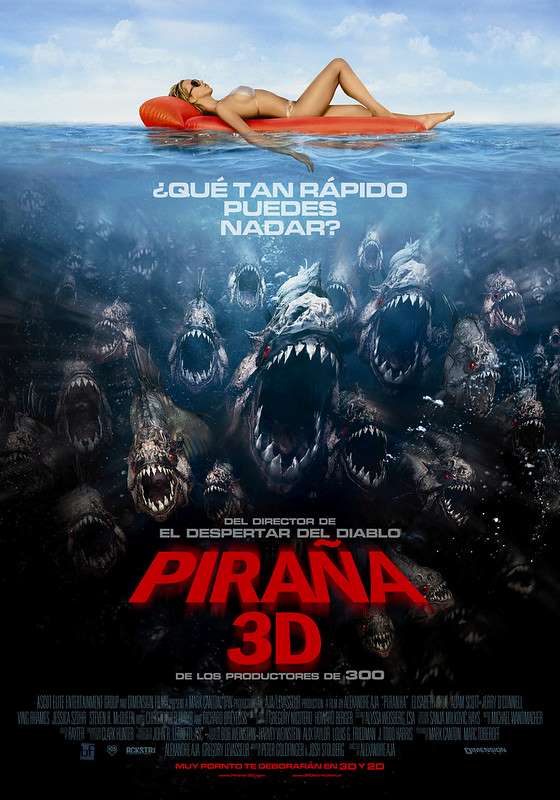
A production that inaugurated a series of horror films starring the piranha: Piranha 2 (2014)and then the overproduction of Pirañacondadirected by Jim Wynorski, and produced by Roger Corman, considered the master of a film genre that combines adventure, humor and horror.
Piranha 2
Piranaconda! Trailer and full movie in Spanish (Online FREE)
The film begins when a scientist steals two pirañaconda eggs, a sort of monstrous animal with the head of a piranha and the body of a anacondaThe two animals (anaconda and piranha) that have been taken as flags of the horror of nature, along with the alligator and the crocodile, the Jaguar and the shark, dethroning the fabulous dragons that spewed fire from their mouths and spread terror throughout the Middle Ages.
A scenario conducive to terror…
The Amazon jungle is unknown, mysterious and full of dangers. Starting with the stories that alluded to fierce tribes and unknown animals that suddenly jumped out of the forest to devour us.
Some of this nourished the image spread by the first explorers of the Amazon during the 19th century, which was imitated by the adventurers. The first half of the 20th century, who exaggerated the dangers of the Amazon rainforest in order to magnify and make profitable their findings, which were, in themselves, surprising, such as the vast extension covered by tropical rainforests, the enormous biological biodiversity it contains, the largest freshwater reserve in the world, the longest and most abundant river on the planet.
Not only them, but even prominent personalities such as Theodore Roosevelt, former president of the United States, who spread a threatening image of the piranha.
Megapirañas! (prehistoric)
Specialists maintain that the common ancestor of piranhas is Megapiranha paranensis, which lived about 10 million years ago.
Apparently, according to skeletons found in Argentina, the megapirañas were up to one meter long .
Its appearance may have been very similar to today’s Goliath tiger fish, which measures one and a half meters long, and is found in the Congo River in Africa.
German researchers led by paleontologist Martina Kolbl-Ebert of ALEA’s Jura-Museum Eiehestaat found a fossil about 9 cm long, with very sharp teeth, very similar to a piranha.
With them, it shares some traits, but it is not their ancestor.
It is estimated to be about 150 million years old. It is Piranhamesodon pinkatomus a sea-dwelling bony fish found in the Solnhofer Archipelago in Bavaria.
The fossil had long, pointed teeth and triangular teeth with serrated edges on the lower and upper jaw. It comes from the pycnodontids.
The research was published in 2018, in the journal Current Biology .
Common piranha names and their meaning
The word piraña derives from the Guaraní: pira (fish) and -aña(evil spirit, or devil). Others argue that it comes from the Tupinambá language: pirá (fish) and -yanha (teeth, toothed, toothy). Or from pira’ai: pirá (fish) -ai (tooth).
In practice, the name piranha designates several different taxa belonging to the family Characidae, subfamily Serrasalmidae.
In the waters of the Amazon River there are about 20 species, which are known by the same name: piranha.
Additionally, in Amazonian indigenous communities, for example in Ecuador, piraña is paña in Kichwa; ma punú, in Secoya; buñú in Siona; pañí, pani, in Shiwiar, Achuar, and Shuar; gare, dare, in Waorani dare, in Cofán; nima, in Záparo (See: Amazonian indigenous languages).
Piranha species and scientific names
In some cases, the vernacular names vary especially for the coloration of its belly. For this reason, they receive some particular scientific names: red-bellied piranha(Pygocentrus nattereri), black-bellied piranha (Serrasalmus rhombeus, Pygocentrus ternetzi) or golden-bellied piranha (Prestobrycon aureus).
Other times it is called according to the place where it is abundant, such as the Orinoco piranha(Pigocentrus caribe) or by the shape of its body(Serrasalmus elongatus, Serrasalmus compressus, Mylossoma duriventre, Prestobrycon striolatus), or simply piranha.
| Feature | Scientific name of the species |
|---|---|
| Red piranha | Pygocentrus nattereri |
| Black piranha | Serrasalmus rhombeus, Pygocentrus ternetzi |
| Golden piranha | Prestobrycon aureus |
| Orinoco Piranha | Pigocentrus caribbean |
| Elongated | Serrasalmus elongatus |
| Compressed | Serrasalmus compressus |
| Hard-bellied | Mylossoma duriventre |
| Ribbed | Prestobrycon striolatus |
4 groups of species called “piranhas”.
Specialists distinguish four groups of piranhas, according to their genus.
| Group / Gender | Species |
|---|---|
| Pygoncentrus | P. caribe, P. nattereri, P. coniva, P. nattereri ternetzi, P. piraya. |
| Prestobrycon | P. aureus, P. maculipinais, P. striolatus. |
| Serrasalmus | S. elongatus, S. compressus, S. bradtii, S. calmoni, S. geryi, S. rhombeus. |
| Mylossoma | M. duriventre and M. orbignyanum. |
Characteristics of piranha
Describing the piranha, due to the variety of existing species and the similarities between them, is a very controversial issue, even among the specialists themselves, because they are fish that show remarkable morphometric changes in their development, especially in growth and in the reproductive period.

In addition, many of the descriptions are based on the observation of relatively few specimens of each species (Machado-Allison 2002).
Habitat
The piranha is a carnivorous or omnivorous fish, which generally lives in freshwater bodies located in the Amazon basin, although it can now be found in rivers outside the region, even in distant continents such as the tropical regions of Asia and Africa.
Body
The body of the piranha is generally oval, although in some species it is almost rounded, laterally compressed.
Head
It has a large, thick head with a prominent lower jaw, which gives it an aggressive appearance.
Scales
It has small scales .
Color / skin
The coloration of its body is variable, according to the species, but is generally largely silvery, dotted with black spots that disappear as the species ages.
Then, the skin becomes a more intense color, with different shades of color ranging from red, dark brown tending towards black, and even bluish-green tones.
Teeth
It is endowed with numerous teeth, triangular, very sharp, specialized in tearing the prey, teeth that can change throughout its life.
The teeth are interlocked in horizontal lines, and change the dentition in parts, first half of the jaw, then the other half.
Length
The length of its body varies, in adult specimens, and according to the species, from 15 to 40 cm, but it can reach up to 50 cm in length in some areas that are more favorable for its development.
Behavior
The piranha is an aggressive fish, particularly against predators that approach its young. Or when they sense the presence of blood in the water, due to their highly developed sense of smell. Thus, a fish that is normally shy and tends to flee alone becomes a very aggressive animal when it attacks prey in a group.
Barking piranhas?
A curiosity of the piranha is that it has been discovered that they “bark”, emitting a sound that they use to frighten their predators. The sound, similar to a dog’s bark, is produced by vibrating its swim bladder.
Vegetarian piranha?
It is a carnivorous fish, however, some species eat vegetables such as seeds and fruits, so they are not strictly carnivorous, and behave more like omnivores. This is the case with Serrasalmus brandtii and Pigocentrus nattereri, as recorded in the Pindare River, in the state of Maranhao, in northeastern Brazil.
The two best known and apparently most voracious species are the red-bellied piranha(Pygocentrus nettereri) and the black-bellied piranha(Serrasalmus rhombeus).
The red piranha(Pygocentrus nettereri)
The red-bellied piranha, red piranha, coicoa or caribe(Venezuela), has an oval-shaped body, with underdeveloped pectoral and pelvic fins.

Source: RuizValentina / CC BY-SA
Its size, in adulthood, is 25 to 30 cm long.
Its head is thick, its lower jaw is very prominent, like the rest of the piranhas.
Their teeth are numerous, small and sharp.
The name comes from the fact that during the breeding season, the belly acquires an intense red color.
But that coloration fades as you age, as do the black spots on your body that disappear.
Nothing grouped in large banks. It feeds on fish, crustaceans, insects, but also seeds and fruits.
It reproduces after the rainy season, from April to May.
The female deposits her eggs at the bottom of the river, in the cavity made by the male.
The hatchlings are cared for by their parents while the eggs are hatching, especially with great zeal for the father.
Its preferred habitat is rivers with little water movement, or in stagnant waters, with an average temperature of about 23 ° C. It is abundant in the rivers of both South and Central America.
The red-bellied piranha is considered aggressive and voracious.
They first attack the eyes and tails of their fish victims to immobilize them, and then devour them, using their specialized teeth for incisive cuts.
It is estimated, but has not been proven, that this species lives about five years in the wild and up to 30 years in captivity.
Indigenous tools made from piranha teeth
From jaws equipped with sharp teeth, the indigenous people make knives or scissors.
Jácome-Negrete (2013) reports that the Kichwa people of the Colombian Amazonin the lower Curaray river basin in Ecuador, they use the jaws of red-bellied and black-bellied piranhas as weapons of war. hunting and utensils, such as the matiri or quiver where the darts or blowpipes are kept used in hunting.
With their sharp teeth they make notches in the darts so that they break when penetrating the body of the victims and make the poison more effective.
Black piranha(Serrasalmus rhombeus)

The black-bellied piranha, piranha preta for Brazilians, has an elongated body in the juvenile stage and a rhomboidal shape in the adult stage. It measures up to 40 cm, and weighs up to 3 kg.
The head is robust and flat, with a short muzzle, a very prominent lower jaw, and numerous small, triangular, strong and very sharp teeth.
The body is leaden silver with many oval spots in juveniles, and darkens in adults, becoming very bluish or black.
Insiders point out that the bite of this piranha is one of the strongest among all vertebrates.
The eyes of this piranha are red.
Their scales are small, soft-edged and sticky to the touch.
Their fins are blackish gray or black. During the breeding season they turn completely black.
They move in groups of more than 10 individuals. They are very territorial fish.
They feed on other small fish, aquatic insect larvae, crustaceans, and fins of other fish, as well as fruits, stems and seeds.
They live in rivers and lagoons in the lowland rainforest, and slightly less in the upper Amazon rainforest (Valdivieso-Rivera el al 2016).
Sexual reproduction
There is no marked dimorphism among piranhas, except that females have a reddish hue on the lower part of their bodies. Piranhas mate, and after copulation, the male is in charge of preparing a nest by digging in the bottom of the river. Spawning occurs during the night, and can reach between 300 and 1,000 eggs, about 2 mm in diameter and yellowish in color.
Food uses
The piranha is an edible fish in many parts of the Amazon basin. On the banks of Brazilian rivers, for example, its meat is consumed in various typical dishes: in fillets or in soup, fresh or smoked.

The meat has a mild, slightly accentuated flavor , is lean and has a firm texture.
It is a traditional dish in the Pantanal area, such as in Cáceres, located in the Brazilian state of Mato Grosso, near the Bolivian border.
Piranha soup is another traditional dish in the region. The soup is seasoned with parsley, cilantro, onion and chopped tomato.
Piranha sashimi is also prepared by dressing its raw meat with sliced onion, ginger, soy sauce or soy sauce and lemon juice.
Nutritional value
Piranha meat has a high caloric value.
It has digestible fats.
A high concentration of minerals such as calcium and selenium. Satisfactory levels of vitamin A, B6, B12, D and E (Naranjo 2007: 184).
Few studies have been conducted on the nutritional value of piranha meat, perhaps because it is not considered a food in urban areas, due to its undeserved reputation as a human eater.
However, in many indigenous communities and rural areas it is eaten fried, roasted, stewed or boiled.
The piranha has, however, a high protein content (19.3-20 g), mainly due to its fish diet.
This protein value, together with a low fat content (0.28-0.32 g), gives it a high nutritional value (González et al 2009).
Beliefs and superstitions about consumption
Members of some Amazonian indigenous communities, such as in the Zápara nation, located east of the Ecuadorian province of Pastaza, near the border with Peru, are forbidden to consume piranha (they call it nima) to women, because it is believed that the menstrual period can lengthen and become irregular (See: Amazon food taboos).
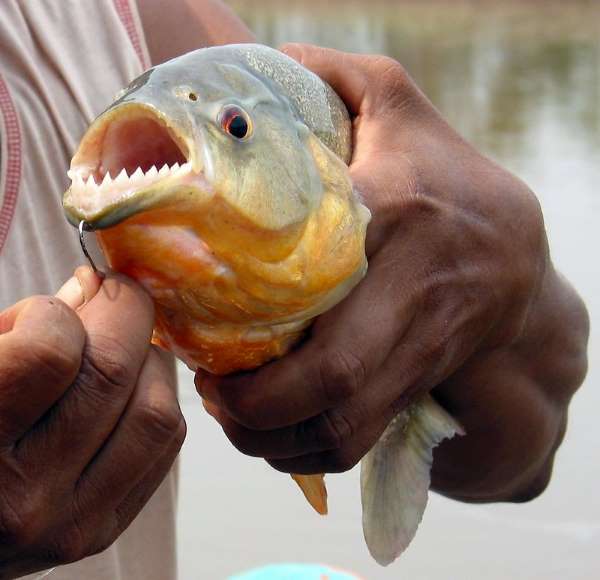
Piranha as a pet (care)
It has become fashionable to keep piranhas in aquariums. The breeding of this fish in captivity presents some particularities.
One is that for each individual is required in the aquarium at least about 50 liters per individual.
The water temperature should be between 21 and 29 ° C, and the pH should be between 5 and 7.
Given the aggressive behavior of the fish, it is recommended not to put it together with other fish species because the piranha may bother them, biting their fins.
They even recommend not to put them together with many other piranhas in the same aquarium, because at certain times they become very aggressive due to their territorial nature, which sometimes leads them to bite individuals of the same species.
Piranha predators
The piranha is a predator, which is itself a victim of other predators.
These include the pink dolphin, bufeo, or tonina (Inia geoffrensis), which inhabits Amazonian rivers.
Others are large turtles, alligators, herons, other larger fish and, of course, fishermen.
The pink dolphin stalks its prey, then drags it to the bottom of the river, where it rips off its head before devouring it.
It is interesting to note that the paiche or pirarucu (Arapaima gigas), the largest Amazonian fish, is not afraid of the predatory threat represented by the piranha.
Its armor makes it virtually invulnerable to piranha attacks.
The paiche armor is formed by a double layer of reinforced bone scales: an inner layer, which contains collagen, and an outer layer, which has collagen and calcium, a combination that hardens it.
That pattern of hard layer on soft layer produces tremendous body resistance, while maintaining the body’s flexibility. It is a pattern that is being studied for industrial applications (Case 2017).
Roosevelt’s piranha
Theodore Roosevelt (1858-1919) was one of the most popular politicians in the United States.
He was the country’s twenty-sixth president.
Under his mandate, the basis for the U.S. nation’s nature protection systems was created: reserves, national parks and natural monuments.
The application of the Monroe Doctrine was also refined, with the device known as the Roosevelt Corollary, which was used to justify U.S. political intervention in Latin American countries when the actions of those countries contravened the political or economic interests of the United States.
Roosevelt was a singular and very tough politician, nicknamed the “lion” because of his strong character .
He held the presidency of his country twice: in 1901, as incumbent vice-president, assuming the presidency after the fatal attempt against President Mc Kinley, and then winning the elections in 1904, to complete a seven and a half year term that is considered decisive in the consolidation of his country.

Trip to Brazil
In 1913, after losing his third presidential term, he traveled to Argentina and Brazil to promote U.S. interests within the framework of Pan-Americanism.
His trip to Brazil became a sort of safari to the Amazon jungle, in the company of Candido Rondon, the legendary Brazilian explorer and cartographer.
The experience related to that trip, funded by the American Museum of Natural History, which explored the headwaters of the La Duda River (renamed the Roosevelt River) in 1914, inspired Roosevelt, who was injured and had malaria, to write a book, Through the Brasilian wildernesstranslated into Portuguese in 1976: Nas selvas do Brasil (Universidade de Sao Paulo).
In that book, Roosevelt confessed to having killed “innumerable of those noxious amphibians“, referring to the jacares, alligators that, he says, are easy targets, since they do not move, since “they have insensitive nerves”.
Roosevelt said of piranhas that:
“They will tear off the finger of a hand by slipping carelessly into the water; they mutilate swimmers,…, they will tear and devour any wounded man or beast; for blood in the water excites them to madness.”
Theodore Roosevelt (1858-1919) in Through the Brasilian wilderness
Roosevelt’s book became a best seller, spreading the idea that piranhas are very dangerous under any circumstances.
But this is not always the case.
It is estimated that about 300 piranhas would take about five minutes to devour an 80 kg person, leaving only the bones.
Piranhas only behave very aggressively when food is scarce, particularly during the emptying of rivers.
They attack in groups when food is concentrated, increasing competition among them. And they do so only when swimming in shoals or schools.
Piranhas are very vulnerable in shallow water, and are easy prey for alligators, fishing birds , dolphins or indigenous fishermen.
Drawings of piranhas
Bibliography consulted
- Aquarium of Barcelona. S.f. Red piranha. Aquariumbcn.com/species/p/red-pyraña-roja/ Source.
- Case O. 2017. The undeserved fame of the world’s fiercest fish. El País, Madrid. 01.06.2017. Source
- González A., Márquez A., Senior W., Martínez G. 2009. Fat and protein content in Pygocentrius cariba, Prochilodus mariae, Plagioscion squamosissimus, Piaractes bracypomus and Hipostomus plecostomus in a Middle Orinoco flooding lagoon. Revista Científica, Vol. 19 (1), February. Maracaibo. Source
- Jácome-Negrete I. 2013. Kichwa ethnoichthyology of the lakes of the lower Cururay river basin (Amazonia), Ecuador. Biota colombiana, Vol. 14 (1), January-June. Source
- Machado-Allison A. 2002. Carib fishes of Venezuela: an approach to their taxonomic study. Boletín de la Academia de Ciencias Físicas, Matemáticas y Naturales, Vol. LXII (1), March, 35-88. PDF
- Magazine N + 1 Science that adds up! Piranha teething. M. Kolmann et al. Evolution and Development. Source
- Roosevelt T. 1914. Through the Brasilian Wilderness. New York: C. Scribner ‘ Sons. Source
- Zahl P. 1980. Seeking the truth about the feared piranha. National Geographic, November, 715-732. PDF

Dr. Rafael Cartay is a Venezuelan economist, historian, and writer best known for his extensive work in gastronomy, and has received the National Nutrition Award, Gourmand World Cookbook Award, Best Kitchen Dictionary, and The Great Gold Fork. He began his research on the Amazon in 2014 and lived in Iquitos during 2015, where he wrote The Peruvian Amazon Table (2016), the Dictionary of Food and Cuisine of the Amazon Basin (2020), and the online portal delAmazonas.com, of which he is co-founder and main writer. Books by Rafael Cartay can be found on Amazon.com
This post is also available in:
![]() Español (Spanish)
Español (Spanish)


